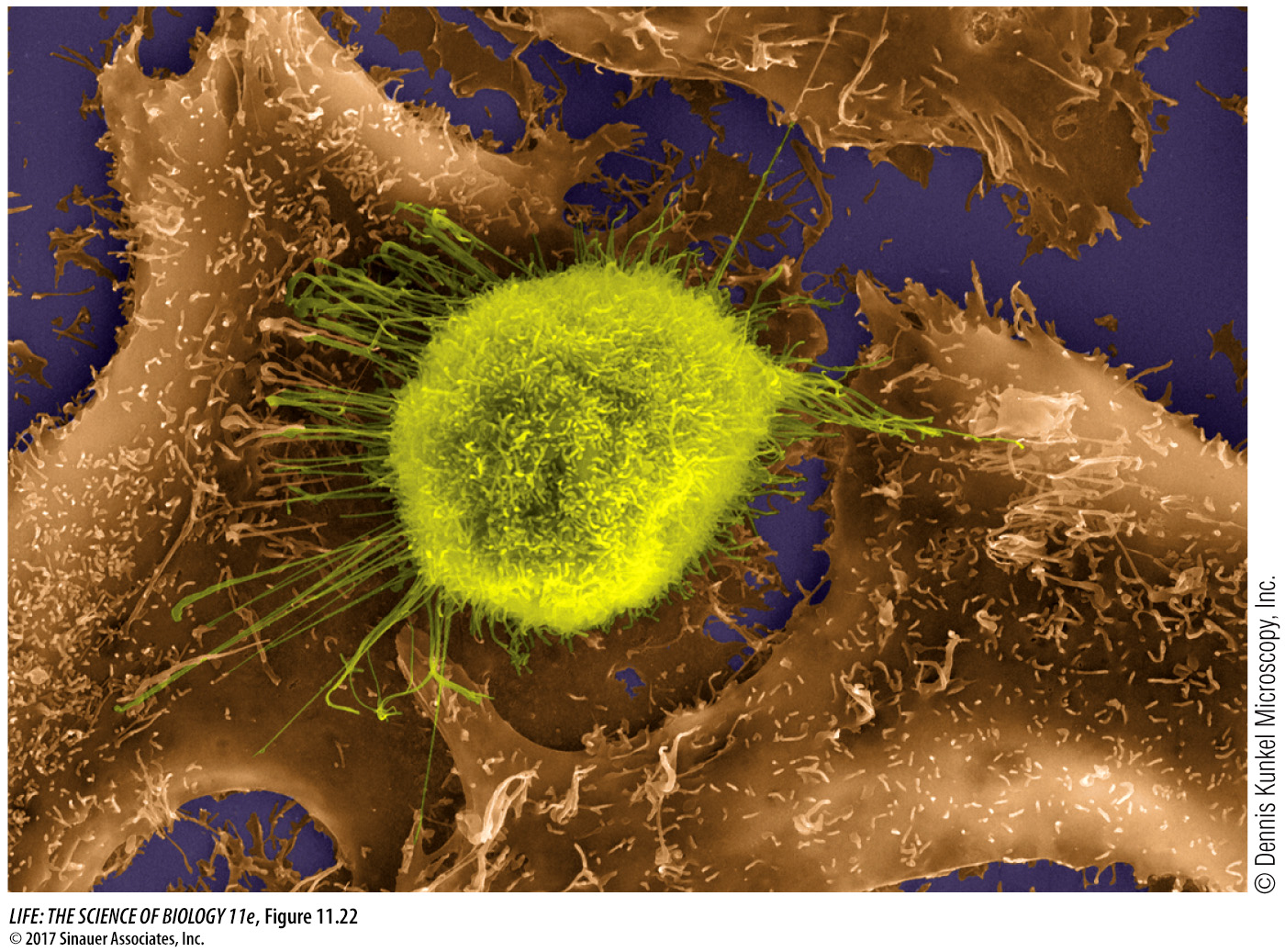Cancer cells differ from normal cells in important ways
235
Cancer cells differ from the normal cells from which they originate in two ways:
Cancer cells lose control over cell division.
Cancer cells can migrate to other locations in the body.
Most cells in the body divide only if they are exposed to extracellular signals such as growth factors. Cancer cells do not respond to these controls, and instead divide more or less continuously, ultimately forming tumors (large masses of cells). By the time a physician can feel a tumor or see one on an X-
Benign tumors resemble the tissue they came from, grow slowly, and remain localized where they develop. For example, a lipoma is a benign tumor of fat cells that may arise in the armpit and remain there. Benign tumors are not cancers, but they must be removed if they impinge on an organ, obstructing its function.
Malignant tumors do not look like their parent tissue at all. A flat, specialized epithelial cell in the lung wall may turn into a relatively featureless, round, malignant lung cancer cell (Figure 11.22). Malignant cells often have irregular structures, such as variable nucleus sizes and shapes. This characteristic was used to identify the cells in Henrietta Lacks’s tumor as malignant (see the opening investigation of this chapter).

The second and most fearsome characteristic of cancer cells is their ability to invade surrounding tissues and spread to other parts of the body by traveling through the bloodstream or lymphatic ducts. When malignant cells become lodged in some distant part of the body, they go on dividing and growing, establishing a tumor at that new site. This spreading of cancer, called metastasis, results in organ failures and makes the cancer very hard to treat.